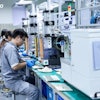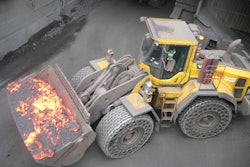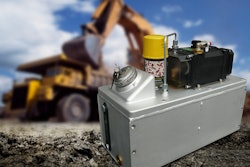Dana Holding Corporation has announced strong results for the second quarter of 2012.
Net income for the quarter was $86 million, compared with $68 million for the same period in 2011. This is the fifth consecutive quarter of positive net income. Diluted adjusted earnings per share (EPS) were $0.56, up 24% compared with $0.45 in the second quarter of 2011.
Sales for the quarter of $1.95 billion were in line with last year. The effects of overall weaker international currencies and soft commercial-vehicle production in Brazil were largely offset by new business and higher production levels in North America and other parts of the world.
The company reported adjusted EBITDA of $225 million in the quarter, a 12% increase over the prior-year period. Adjusted EBITDA as a percent of sales for the quarter was 11.5%, compared with 10.4% for the same period in 2011.
Free cash flow for the quarter was $107 million, compared with $44 million for the same period last year. With liquidity of $1.4 billion and net debt of $13 million at June 30, 2012, Dana continues to have a strong financial position.
"We delivered strong earnings and margin growth in the second quarter despite the impact of currency and soft commercial-vehicle volumes in Brazil," says company President and Chief Executive Officer Roger J. Wood. "These strong results reflect our ongoing focus on lean operations, as well as our ability to react quickly to changing market conditions.
"We continue to invest in new driveline, sealing and thermal-management technologies aimed at three key market value drivers – improved fuel economy, reduced emissions and lower cost of ownership. And, these technologies continue to attract the interest and orders of customers around the world."
New Product Technologies
In the second quarter, Dana introduced and launched into production several new technologies, including:
- Victor Reinz transmission separator plates. Leveraging its multi-layer steel cylinder-head expertise, Dana developed a tighter, more durable seal for seven-, and eight-speed and continuously-variable transmissions in light-duty vehicles;
- Spicer 318 hydrostatic continuously variable transmissions (HCVT). These transmissions deliver 20% fuel savings when construction vehicles are moving at high speeds and provide better traction at low speeds;
- Spicer PS09 powershift transmissions. The advanced design of these transmissions for off-highway vehicles improves operator comfort, machine productivity, and fuel efficiency, the latter by up to 12% for reduced emissions and operating costs; and
- Spicer 91S drive axles. These lighter, more durable drive axles were developed specifically for commercial vehicles in India.
Dana was also awarded fuel-cell development contracts from three automakers in the quarter. The company has positioned itself as a development partner of choice for sealing and thermal-management technologies for hybrid-electric, electric and fuel-cell powertrains.
2012 Financial Guidance
Reflecting the impact of currency and softening production demand in certain end markets, Dana revised its guidance for full-year sales, adjusted EDITDA and diluted adjusted EPS. Adjusted EBITDA as a percent of sales and free cash flow targets remain unchanged, while capital spending has also been revised.
Current guidance for the full year is as follows:
- Sales are projected at $7.5 billion to $7.6 billion, compared with previous guidance of a 3% increase;
- Adjusted EBITDA is projected to be $820 million to $840 million, compared with previous guidance of $845 million to $865 million;
- Adjusted EBITDA as a percent of sales is forecast to be approximately 11%;
- Diluted adjusted EPS is expected to total $1.94 to $2.01 per share, compared with previous guidance of total $1.95 to $2.05 per share;
- Free cash flow for the year is projected at more than $200 million, excluding the special one-time $150 million pension contribution; and
- Capital spending is expected to total $210 million to $230 million, compared with previous guidance of $225 million to $250 million.

















![Sa P75 I Sahr[80]](https://img.oemoffhighway.com/mindful/acbm/workspaces/default/uploads/2025/10/sa-p75-isahr80.Cn3n79HB4H.jpg?ar=16%3A9&auto=format%2Ccompress&fit=crop&h=135&q=70&w=240)